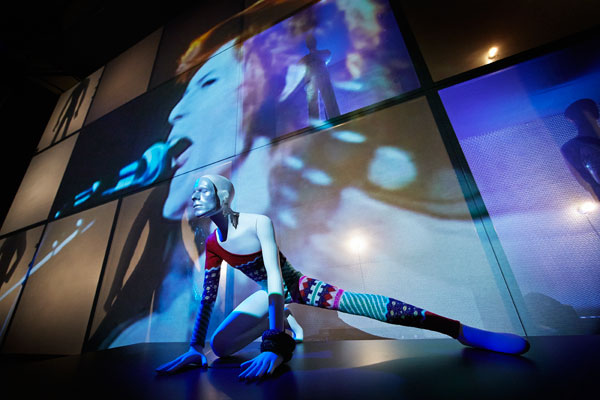A never-ending crowd of admiring but confused faces are and will be leaving the Art Gallery of Ontario (AGO) this fall, experiencing David Bowie’s cataclysmic talent that’s hard to explain.
David Bowie Is is an eclectic exhibit of music, fashion, theatre and art inspired by the multi-faceted British born performer and a cult pop-star David Robert Jones, who changed his name in the 1960s, to avoid confusion with The Monkees’same-named singer.
“From the beginning he was creating personas. He was not the first person who did that, as musical entertainers and artists have been changing their names for years like Ringo Starr. But what was different here: this is just the beginning of a cycle of self-transformations and that really came to define him,” said Jim Shedden who is a project manager for publications and special projects of the AGO.
The Victoria and Albert Museum in London, England became a starting point for the international exhibition which has already proved itself as extremely popular and attendance-record-breaking retrospective.
More than 300 objects of the original music and costume installations, hand-written lyrics, photography, and films have become a cultural heritage and have a current touring plan within the regions of North America, Latin America and Europe.
The show begins from the first three rooms in chronological order and then becomes thematic. Each decade portrays him in a different way, saying “David Bowie is not David Jones,” “David Bowie is someone else,” “David Bowie is moving like a tiger on vaseline,” “David Bowie is all around you”. It characterizes him as an artist with many personas whose uncertain image turned into his brand.
“It is blurring lines between what’s considered male or female,” the exhibition visitor and photographer Joanna Helli said. “Questioning why one has to be one or the other as society then and today still does.”
A constant search for extravagancy, chic and glam is showcased in Bowie’s artistic experiments with surrealism, German expressionism, pantomime and Japanese Kabuki.
“It posed a lot of questions to me. Can the past be treated like an unfinished piece of work and is it the job of an artist to travel back in time to complete it and re-share it in their own way with the public?” AGO visitor and artist Rachel Beau asked.
Moving images, artifacts and sound systems create an overall immersive interactive multimedia experience which is different to everyone, as the integrated audio is triggered by what you are looking at.
“Bowie said and he is not telling the truth exactly ‘I am not interested in fashion and I’m interested in making my music look the way it sounds.’ His point was that the music is driving the decisions about these visual and larger cultural collaborations that are going on,” said Shedden.
The culturally educated show ends with the big music hall installation where stage costumes, videos and sounds of the inspiring and critically-acclaimed album Heroes are presented. There is no way to stay indifferent to this violent craziness.
“Characters like that must be really important, characters that don’t have any boundaries. They know what they want to do and they feel free to collaborate, to explore, to take chances,” said Shedden.



